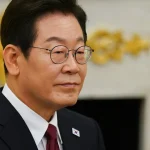Russia’s nuclear blackmail must be met with denial
The current situation in which Russia, a nuclear power, is openly threatening to use nuclear weapons against Ukraine, a nonnuclear power, has a serious impact on the global nuclear nonproliferation regime.
Until now, the five major nuclear powers — the United States, Russia, the United Kingdom, France and China — have made unilateral declarations on negative security assurances by which they will not use nuclear weapons against any nonnuclear state party to the Treaty on the Non-Proliferation of Nuclear Weapons (NPT), with a caveat: to reserve the right to use nuclear weapons if attacked by a nonnuclear state allied or associated with a nuclear-weapon state (except in the case of China which has not mentioned this caveat). These declarations, although not legally binding, function as commitments to mitigate the inequality inherent in the NPT, which solidifies the status of nuclear and nonnuclear states.
Russia’s nuclear threat against Ukraine has grave significance in undermining the reliability of the self-restraint that has underpinned the NPT regime. This article focuses on the danger of a nuclear state using nuclear weapons against a nonnuclear state, an issue that has not sufficiently been discussed in existing nuclear deterrence literature. Looking into this issue will offer a particularly crucial perspective in thinking about Japan’s national security as a nonnuclear state.
The possibility and limits of nuclear use
In the course of the war, Russia has repeatedly hinted at the possibility of using nuclear weapons. In February 2022, Russian President Vladimir Putin announced that the readiness level of his deterrence forces would be raised, citing the attitude of NATO member states. In the fall of the same year, it was reported that discussions were being held within the Russian military about the potential use of tactical nuclear weapons (nonstrategic nuclear weapons) on the battlefield to prevent a Ukrainian army counteroffensive.
Moreover, in late March this year, Putin expressed his intention to help build the nuclear delivery capabilities of the Belarusian military and to construct storage facilities for tactical nuclear weapons in Belarus, while referring to the deployment of U.S. tactical nuclear weapons in Europe. How should we interpret these moves?
There are two aspects to Russia’s nuclear blackmail; one targeting Ukraine’s counteroffensive and the other directed at NATO countries with the aim of preventing their intervention through military aid. However, it would be unrealistic for Moscow to consider using nuclear weapons directly against NATO members as a first choice, as such an action could make NATO fully enter into war, including through nuclear retaliation.
On the other hand, considering that Ukraine’s counteroffensive on the front line is regarded by Russia as the manifestation of the effectiveness of NATO’s military aid, it is necessary to consider the possibility of Moscow conducting nuclear strikes against Ukraine, which could also be employed as a threat to NATO countries.
Nevertheless, under the current circumstances, the effectiveness of Russia’s use of tactical nuclear weapons on the battlefields, if conducted, would likely not be high. First, the use of tactical nuclear weapons in offensive operations would have a detrimental effect on the Russian military itself. If Russian offensive operations accompany overrunning and occupying the areas where tactical nuclear weapons were projected, it could cause significant damage to its own forces. And there is also a possibility that the maneuverability of its own troops may be impaired due to the effect of terrain changes caused by nuclear explosions, making it difficult to turn the table utilizing the nuclear explosions.
Secondly, it is questionable as to what extent the use of tactical nuclear weapons will be effective against modern fighting techniques characterized by geographical dispersal, concealment and maneuver, which is the mainstream in today’s ground warfare. In other words, in modern wars where the efficiency of firepower in conventional weapons has dramatically improved due to advances in technologies related to precision-guided munitions and information gathering, it has become essential for militaries to make efforts to increase the survivability of their forces so that they won’t become lucrative targets of precision firepower.
As part of such efforts, a geographically dispersed fighting method that avoids concentrating on one location has become salient. For instance, it is said that the Ukrainian army assigned a battalion of several hundred troops to the wider operational area which would be covered by a brigade of several thousands in a conventional army. If that is the case, it would not be so easy to neutralize these dispersed troops with tactical nuclear weapons, compared with repelling concentrated forces.
It is still possible for Russian forces, if they are driven into a corner and recede to the borders between the two countries, to use tactical nuclear weapons to push back the Ukrainian military. However, at the same time, it is questionable whether the Russians would be able to make use of a momentum of nuclear explosions in favor of their offensive after fighting a long war of attrition.
‘Strategic deterrence’
All of this is an analysis of a situation assuming that tactical nuclear weapons are used as an extension of deterrence by denial aimed at weakening an adversary’s military power on the battlefield. But the conclusion can be a little different if tactical nuclear weapons are regarded as an extension of deterrence by punishment, used as a tool for countervalue and countercity strikes as a prelude to the use of high-yield strategic nuclear weapons, in order to make the enemy predict that unbearable damage will be inflicted on them.
Russia’s military doctrine released in 2014 mentioned that one of the military risks it was facing was foreign countries’ deployment of strategic nonnuclear systems by precision-guided munitions. It also stipulated that Russia itself would also consider the use of precision-guided weapons as a means of strategic deterrence. This indicates Moscow’s intention to use missiles carrying conventional warheads not only as a means to have an effect on battlefields but also as a tool to pose political threats.
Furthermore, during the war in Ukraine, Russian forces have been launching missile strikes on major cities, particularly targeting civilian facilities, in a way that is unrelated to the battles on the eastern and southern flanks. This can be interpreted as Russia trying to undermine Ukraine’s resolve to continue counteroffensives on the battlefield through political threats — as it cannot realize this militarily on the battlefield — by deliberately deviating from the principle of distinction, which allows the party to the conflict to only attack with military objectives.
Assuming that Russia’s missile strikes on Ukrainian cities are a manifestation of its strategic nonnuclear “deterrence,” we cannot deny the possibility of Moscow subsequently considering the option of using low-yield tactical nuclear weapons against cities and high-value targets.
Related to this, Russia’s Iskander surface-to-surface missile system, assumed to be one of the country’s means of delivering tactical nuclear weapons, has a range of less than 500 kilometers, which means that even if it is deployed to Belarus, it cannot be used to deliver a nuclear weapon to the battlefield since it won’t reach the major front lines in the east and south. However, it makes some sense if it is regarded as a tool to pose a political threat toward Kyiv or regarding transportation routes for weapons from NATO members.
Threatening to use nuclear weapons in such a way is also consistent with Russia’s nuclear doctrine announced in 2020, which states that nuclear deterrence is aimed at preventing an escalation of military action and terminating such action on conditions that are acceptable for Russia.
Denying Russia’s use of weapons
Ukraine, as a nonnuclear state, is not able to use nuclear weapons to deter Russia’s nuclear threats. So what should be done to respond to such a situation?
One direct approach is for the U.S. to show a willingness to retaliate by force, including with nuclear weapons. However, the hurdle to prompt Washington to intervene to such an extent is extremely high, considering that it has not intervened militarily, even at the conventional level, to assist Ukraine, which is not an ally. It is also difficult to make a decision that could run the risk of triggering nuclear counterattacks against NATO’s European members. And such a high threshold could lower the credibility of deterrence.
Moreover, while Russia possesses more than 1,900 nonstrategic nuclear warheads and a variety of delivery systems, the U.S.’ nonstrategic nuclear weapons only include nuclear bombs carried by dual-capable aircraft (DCA) that can perform both conventional and nuclear missions, and low-yield nuclear warheads delivered by submarine-launched ballistic missiles (SLBMs). DCAs could be vulnerable to Russia’s air-defense missile threats and to attacks when stationed on airfields. It is also believed that there are limits to the number of low-yield nuclear warheads for SLBMs. Under the situation in which the U.S.’ nonstrategic nuclear capability is not balanced against that of Russia, doubts may be raised about its effectiveness to deter Russia’s nuclear escalation.
Therefore, it may be insufficient in reality to continue deterring Russia’s use of nuclear weapons only by the U.S.’ current narratives and its nuclear posture. If that is the case, a combination of Ukraine’s own efforts to resist Russia’s nuclear blackmail through conventional warfare and efforts by other countries to strengthen Ukraine’s military capabilities through arms provision in addition to U.S. nuclear deterrence would be essential.
In order to do so, firstly Ukraine must focus even more on geographically dispersed deployment of its troops and increased maneuverability, so that they won’t become easy targets in case of a situation in which nuclear weapons are used on the battlefield. It is also necessary for Ukraine to keep on showing through counteroffensives on the front lines that Russia’s intermittent missile strikes on Ukrainian cities don’t have any impact militarily or politically.
Secondly, in addition to providing weapons to assist Ukraine in its battles, Western countries should take into account Russia’s possible limited use of nuclear weapons on cities and prepare to mitigate damage by providing more Patriot surface-to-air missiles for deploying in strategically important locations such as Kyiv.
In addition, as an implication for the future, serious discussions should take place on whether Washington’s nonstrategic nuclear weapons are sufficient only with nuclear bombs carried by DCAs and low-yield nuclear weapons delivered by SLBMs. Enhancing such intermediate nuclear capabilities will also work as a deterrent against China, which has been fielding a growing number of intermediate-range missiles and will possibly seek lower-yield nuclear warheads to be loaded on such missiles.
Negative security assurance
Strengthening efforts by nuclear states, including the U.S., to provide military aid and nuclear deterrence contributes not only to the defense of Ukraine but also to protecting the NPT regime through which these states have a prerogative. This is because if they fail to deny Russia’s use of nuclear weapons, the discussion as to possessing nuclear weapons would be spurred in nonnuclear states witnessing this situation.
If so, as the Japanese government advocates maintaining and strengthening the NPT regime, it should reiterate the significance of military assistance to Ukraine as well as maintaining seamless nuclear capabilities for the stability of this regime at the upcoming Group of Seven summit meeting in Hiroshima given the fact that nuclear weapons have not been abolished.
Japan, as a G7 member assisting Ukraine and as a nonnuclear state like Ukraine, would be in a position to call afresh on the duty for nuclear states on negative security assurance.

Geoeconomic Briefing
Geoeconomic Briefing is a series featuring researchers at the IOG focused on Japan’s challenges in that field. It also provides analyses of the state of the world and trade risks, as well as technological and industrial structures (Editor-in-chief: Dr. Kazuto Suzuki, Director, Institute of Geoeconomics (IOG); Professor, The University of Tokyo).
Disclaimer: The opinions expressed in Geoeconomic Briefing do not necessarily reflect those of the International House of Japan, Asia Pacific Initiative (API), the Institute of Geoeconomics (IOG) or any other organizations to which the author belongs.


Senior Research Fellow
Hirohito Ogi is a senior research fellow at the Institute of Geoeconomics (IOG) studying military strategy and Japan’s defense policy. Before joining the IOG, Mr. Ogi had been a career government official at the Ministry of Defense (MOD) and Ministry of Foreign Affairs (MOFA) for 16 years. From 2021 to 2022, he served as the Principal Deputy Director for the Strategic Intelligence Analysis Office, the Defense Intelligence Division at the MOD, where he led the MOD’s defense intelligence. From 2019 to 2021, he served as a Deputy Director of the Defense Planning and Programming Division at the MOD. He holds a Master’s degree in international affairs from the School of International and Public Affairs (SIPA), Columbia University, and a Bachelor’s degree in arts and sciences from the University of Tokyo. He is the author of various publications including Comparative Study of Defense Industries: Autonomy, Priority, and Sustainability (co-authored, Institute of Geoeconomics, 2023).
View Profile-
 Analysis: Ready for a (Tariff) Refund?2025.12.24
Analysis: Ready for a (Tariff) Refund?2025.12.24 -
 China, Rare Earths and ‘Weaponized Interdependence’2025.12.23
China, Rare Earths and ‘Weaponized Interdependence’2025.12.23 -
 Are Firms Ready for Economic Security? Insights from Japan and the Netherlands2025.12.22
Are Firms Ready for Economic Security? Insights from Japan and the Netherlands2025.12.22 -
 Is China Guardian of the ‘Postwar International Order’?2025.12.17
Is China Guardian of the ‘Postwar International Order’?2025.12.17 -
 Japan-India Defense in a Fragmenting Indo-Pacific2025.12.10
Japan-India Defense in a Fragmenting Indo-Pacific2025.12.10
 Event Report: The Trump Tariffs and Their Impact on the Japanese Economy2025.11.25
Event Report: The Trump Tariffs and Their Impact on the Japanese Economy2025.11.25 The “Economic Security is National Security” Strategy2025.12.09
The “Economic Security is National Security” Strategy2025.12.09 The Real Significance of Trump’s Asia Trip2025.11.14
The Real Significance of Trump’s Asia Trip2025.11.14 The long road to a South Korea-U.S. trade deal2025.11.26
The long road to a South Korea-U.S. trade deal2025.11.26 Trump’s Tariffs Might Be Here to Stay – No Matter Who’s in Power2025.11.28
Trump’s Tariffs Might Be Here to Stay – No Matter Who’s in Power2025.11.28











